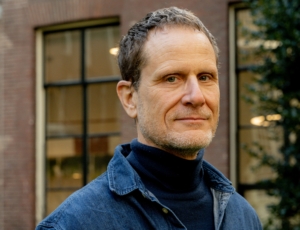Faith in Black Pete got fundamentalist traits this year
Faith in Black Pete got fundamentalist traits this year. This is a great pity as the feast of Saint Nicholas or Sinterklaas risks losing its celebrated sense of fun, as the recent violence during the start of the festivities has shown. Saint Nicholas was a saint in 2nd Century Eastern Europe, revered for his generosity and kindness to the poor. Over the years, his tale has produced various traditions in different countries. These include Santa Claus who, at Christmas, travels from the North Pole by reindeer sleigh to fill the stockings of eager children with toys made by his crew of elves. The Dutch counterpart, Sinterklaas, travels from Spain by ship on horseback with his band of Black Pete helpers to place gifts in the shoes of excited Dutch children. The details differ but the underlying aim is the same – a festival to make children happy.
‘Pete has always been black so should stay black’
However, the stubborn defence of Pete with a traditionally black face, means the future of Saint Nicholas himself is at stake. Just a few more years of vicious altercations about Black Pete and no one will want anything to do with Saint Nicholas – or the Sint, as he is affectionately known.
The orthodoxy in the debate (‘Pete has always been black so should stay black’) is particularly surprising as belief in the venerable Saint Nicholas would seem to be one of the few faiths that does not take itself too seriously. The belief in Saint Nicholas is extraordinary because the majority of non-believers do everything in their power to sustain young believers’ illusions. So it is a sorrowful moment when children lose their faith: both for the child – who suddenly experiences the grown-up world as collectively deceitful – and even more for the adults who mourn the irrevocable loss of youthful credulity.
A belief enabled by non-believers – imagine!
A belief enabled by non-believers – imagine! You would not expect belief like that to take itself very seriously. However, the very opposite is true: non-believing adults stand guard like lions to protect honest childlike belief – nothing is allowed to change.
Why not? One argument is that children will no longer believe in the ‘Sint’ if changes are made to Black Pete. Anyone who takes this idea seriously reveals that they are, in fact, non-believers because true believers – like most children – incorporate change seamlessly into their beliefs. Even the most far-fetched and outdated aspects of the Saint Nicholas feast (such as placing shoes next to a defunct chimney breast) does not cause a crisis of faith for a child.
However, the guardians of Saint Nicholas have other objections to altering Black Pete. It is their belief; it is a special Dutch festivity, a traditional belief. In the eyes of these guardians, many of their critics are not really Dutch (‘go back to your own country’) and, therefore, not entitled to say anything about Saint Nicholas let alone suggest any adaptations to the festivities. This argument shows again that the Saint Nicholas faith is defended by non-believers. True believers would want to share their belief and even encourage others to join, and make the festivities as inclusive as possible. Saint Nicholas only for ‘real Dutch people’? True believers would be horrified if they could not let others share in the happiness and joy that the Sint brings.
The battle behind the cloak of Saint Nicholas: who is the boss in the Netherlands?
The non-believers are fighting a completely different battle behind the cloak of Saint Nicholas: who is the boss in the Netherlands? Ethnic hierarchies are callously applied in which white people are assumed to be more authentically Dutch than black people and so, naturally, have more authority over this national children’s festival. But, in the context of the history of Saint Nicholas, the view that ‘black people’ are not part of this Dutch festival is astonishing. Know your faith! The image of the obedient black servant, who was added to Saint Nicholas’s entourage in the mid-nineteenth century, derives from the stereotypical Dutch slave in the Dutch colonies of Surinam and the Antilles. To claim that citizens in the Netherlands today who descend from these slaves are not entitled to an opinion on Saint Nicholas festivities and the racial stereotype of Black Pete is patently absurd – they have been Dutch citizens for centuries.
Excluding them from the debate on the grounds that they are not Dutch enough and not part of the Saint Nicholas tradition is, therefore, extremely painful. The racialized figure of Black Pete derives from our own history and that is why he is now part of the story of Saint Nicholas. That he plays a subservient, deferential role should be an extra reason to take the opinions and feelings of his descendants seriously in this debate. If they are offended and hurt by the portrayal of Black Pete, isn’t that sufficient reason to stop? Otherwise, it seems as if we do not accept them today as fellow Dutch citizens and as if we do not pay attention to the past. The campaigners for Black Pete are proud of Dutch tradition but seem completely unaware of their own national history.
The non-believers are doing Saint Nicholas a disservice now that his future is under threat because of their rigid orthodoxy. Moreover, by clinging to the requirement that Pete must be black, non-believers display a total disregard for the feelings and emotions of their fellow Dutch citizens. Not just the feelings of black Dutch citizens as there are also many white Dutch citizens who would like to see Black Pete vanish so that they can keep the Saint Nicholas celebrations free from the blot of racism. Maybe then, it will be possible to preserve one of the most charming beliefs in the Netherlands.
This op-ed first appeared in Dutch in De Groene Amsterdammer on December 5th 2015 and was translated to English by Petry Kievit-Tyson



